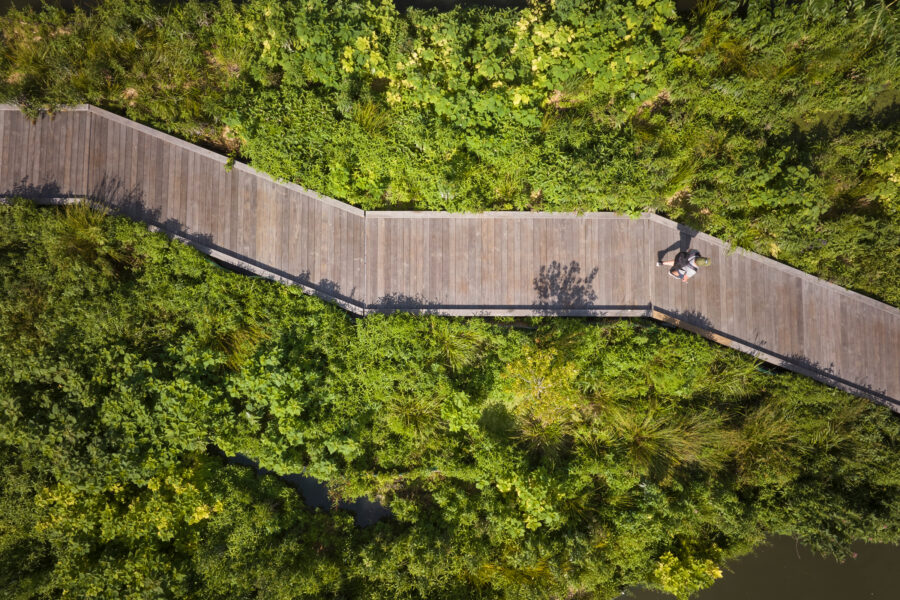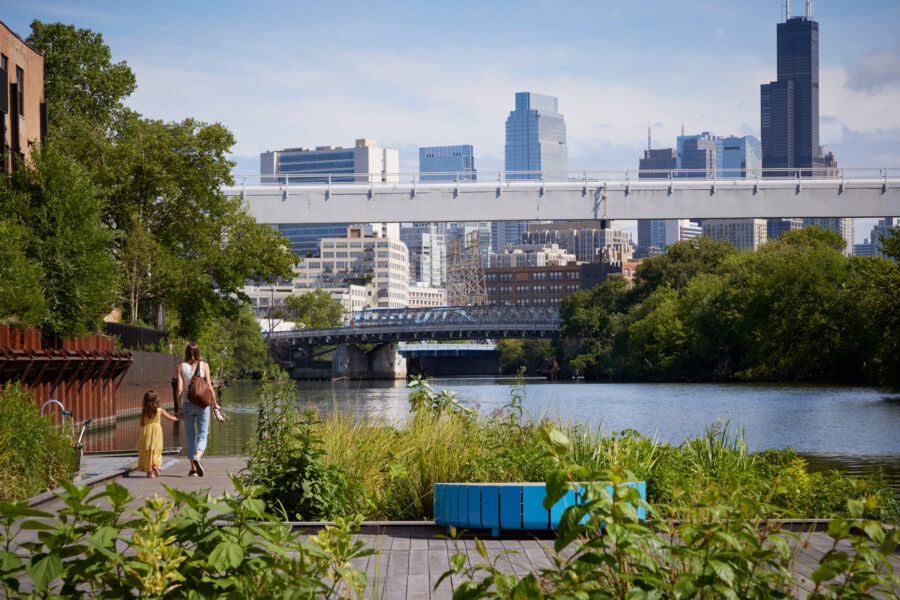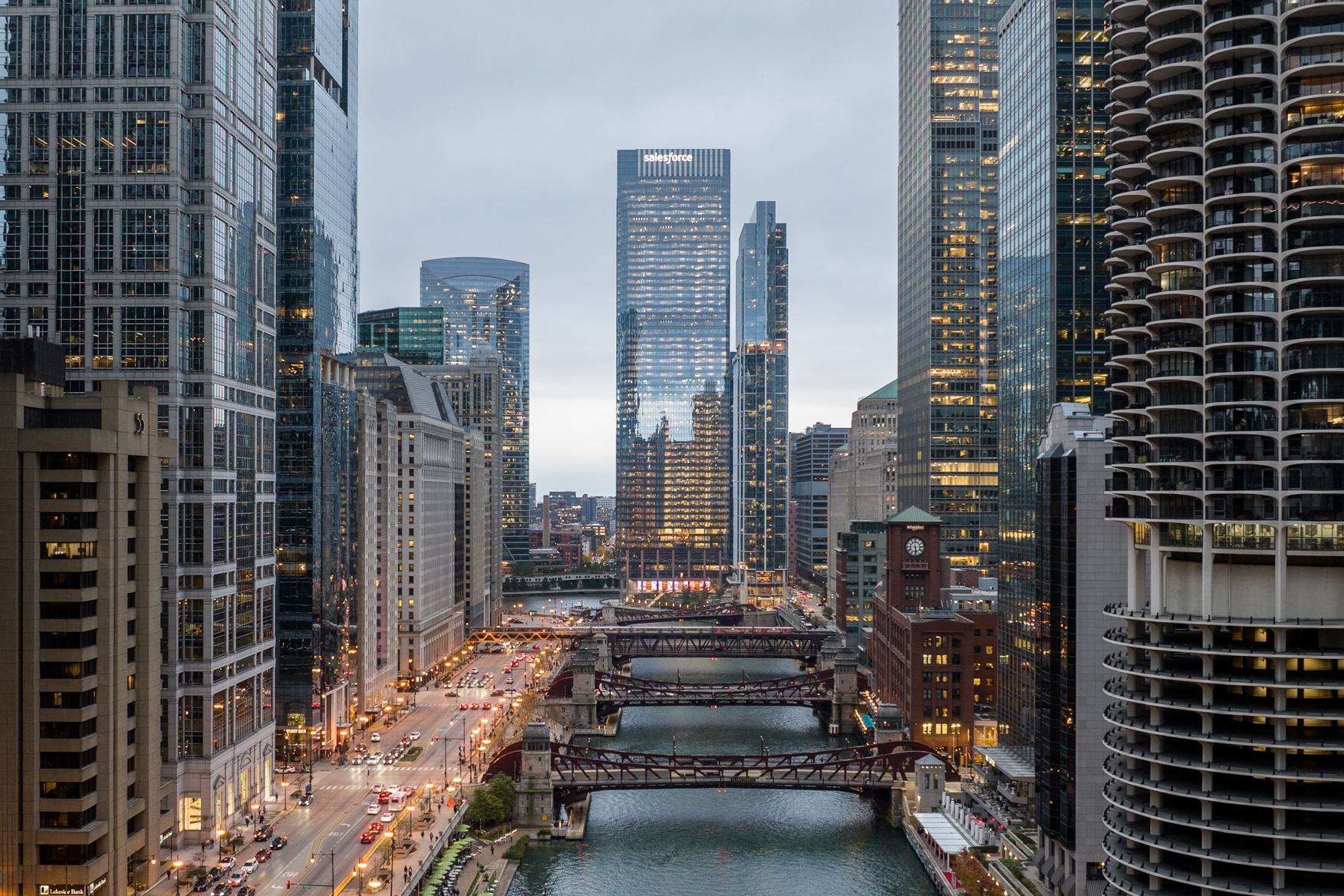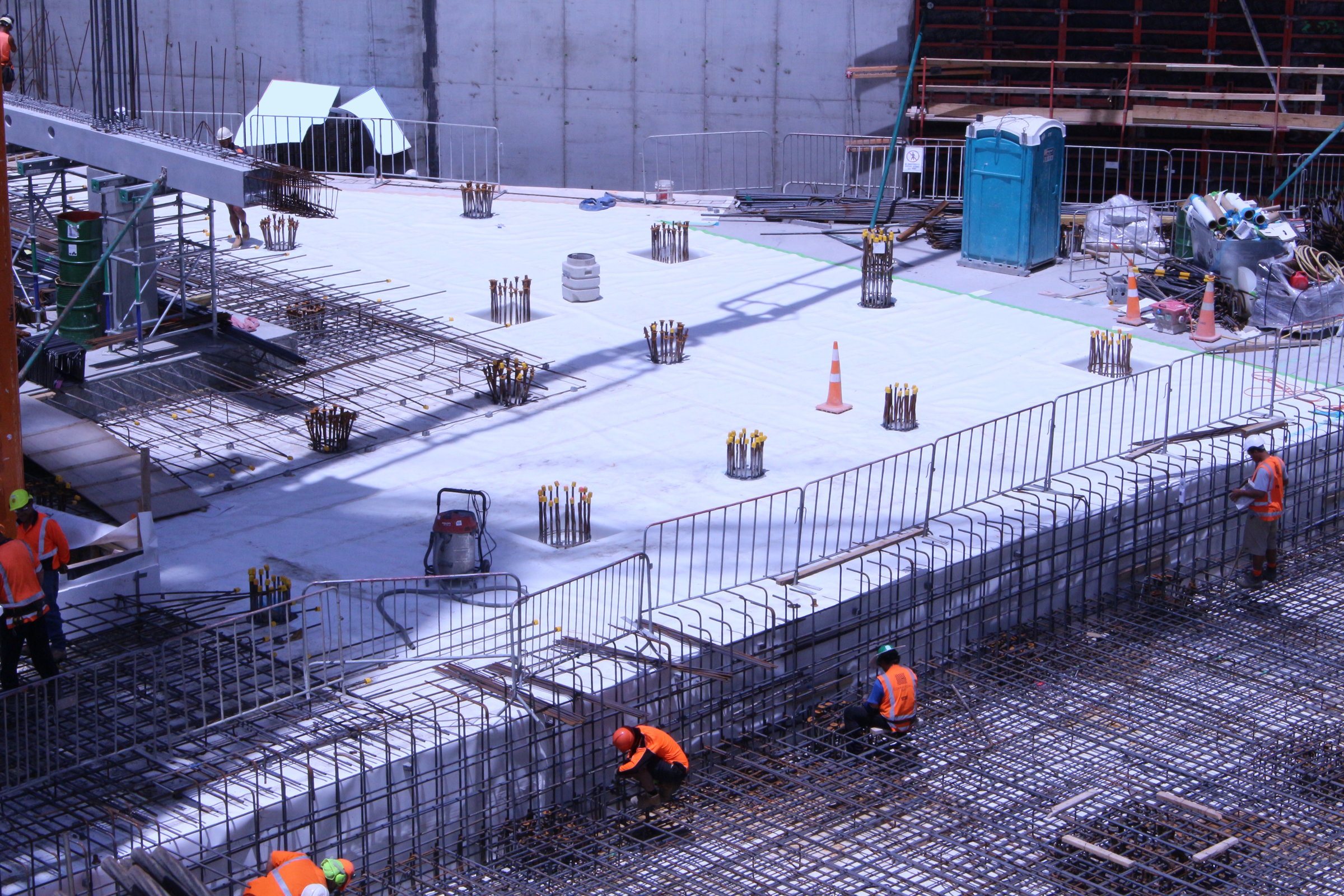Story at a glance:
- The country’s third largest city is leaning into green with innovative building strategies.
- Chicago was an early adopter in the green building movement, and Illinois continues to have significant LEED-certified square footage.
- Read more about successful sustainable projects in Chicago, including the Wild Mile, Maxwells Trading, and a new Goose Island brewpub.
An enormous public park system with plentiful green space, a great lake, vast public transit—there’s a lot you might consider green about the country’s third largest city. The city is especially known around the world for its architecture.
Chicago was an early adopter in the green building movement, says Brian Imus, executive director at the Illinois Green Alliance. “I give a lot of credit to the AEC industry that’s based here in Chicago. They had a lot of interest in green building,” he says. “They did a lot of experimentation early on on how to advance a lot of the new technologies and design best practices. As a result, not only did it have an impact on what was built in Chicago, the architecture community here got a reputation for understanding how to design and build green buildings around the world.” He says Illinois gets recognized as one of the states with the most LEED-certified square footage every year.
The city’s evolving commitment to sustainability continues to be seen in what companies choose to headquarter here, too, Imus says, noting businesses like Salesforce and Google, both of which are pursuing or have pursued all-electric projects in Chicago. “The new Salesforce Tower is all-electric. The new Google renovation of the Thompson Center is going to be all-electric. I can’t speak to why, other than I think for corporations like Google and Salesforce, it reflects their corporate values around the environment.”
Imus hopes the lessons of projects like the Chicago Salesforce Tower, which opened in 2023, can be translated into other buildings in the city, too. “How can we translate those successes so they can be easily adopted by other building professionals, by other building types? How do you start taking what we’ve learned and be able to translate that to our schools, to housing?” Imus asks. “I think there’s a huge potential and a huge opportunity to do that, particularly because there’s more and more financing and funding available for decarbonization projects and all building types, which will have a huge impact.”

The Wild Mile is an evolving mile-long, interactive river restoration project that originated as part of a larger framework plan with the City of Chicago, Urban Rivers, and SOM. Photo by Dave Burk
Chicago has always taken its architecture seriously, says Kimberly Dowdell, current AIA president, who lives part-time in Chicago. “Architecture is such an important identity of the city, it’s prioritized,” she says.
Dowdell credits the city’s leadership over the years for not letting many buildings go into disrepair, which can have a very draining effect on people as well as hurt property values. “It can have a chain reaction, and I appreciate that Chicago has been really protective of its built environment. My hope is that other cities can take that more seriously,” she says.
While she thinks Chicago does a fairly good job when it comes to sustainable development, she’d love to see a more hyper-focused leadership role in city government with regard to reporting on sustainability efforts. That’s a great opportunity for a chief architect, she says, referring to a program she’s championing as part of her AIA presidency. “The chief architect role would depend on what the city needs, but I think at the very least championing climate action and looking at affordable housing should be at the top of the list, so I would advocate for that in Chicago.”

The municipal symbol of Chicago can be seen throughout the Salesforce project—the “y” within a circle that represents the three branches of the Chicago River where the project sits. “That’s really celebrating the intersection of the river, which was essentially the site of the first settlement of Chicago,” says Darin Cook, partner at Pelli Clarke & Partners and the lead architect for the Chicago Salesforce project. Photo by Jason O’Rear
In particular sustainable development has been a hot topic in the city of Chicago recently. In the last couple of years the city released its climate action plan with a huge focus on addressing carbon pollution from the building sector, Imus says.
“They recognized that 70% of carbon pollution in the city of Chicago is coming from our buildings. The city also released a building decarbonization policy working group that provided 26 different recommendations around how the city can support and advance building decarbonization. The city is starting to act on those recommendations,” he says.
Chicago’s Energy Transformation Code, which was an update to the energy code, was also passed last year, which Imus says is a step in the right direction. “And then the mayor introduced the Clean and Affordable Buildings ordinance this January that the city council is considering right now (in spring 2024).” The Clean and Affordable Buildings Ordinance would eliminate harmful natural gas emissions by setting an indoor emissions limit banning the combustion of fuels that emit more than 25 kg/btu—effectively requiring all new construction to switch to clean power sources like electric or other high efficiency systems. The proposed ordinance would provide exceptions to specific systems, including for commercial cooking and emergency backups.
The state of Illinois’ Climate Bank provides education and financing tools for sustainable projects, which Imus expects to have a huge impact. The Greenhouse Gas Reduction Fund includes $7 billion for competitive grants to enable low-income and disadvantaged communities to deploy or benefit from zero-emission technologies, including distributed technologies on residential rooftops. It also includes $8 billion for competitive grants to eligible entities to provide financial and technical assistance to projects that reduce or avoid greenhouse gas emissions in low-income and disadvantaged communities.
Illinois Green Alliance also offers resources like the new Building Energy Resource Hub, a project to help owners, developers, and others in the industry understand the policy and financing trends around building decarbonization.
In general, conversations about green building are no longer LEED-centric, Imus says. They’re about so much more.
“It’s not just about third party certifications. It’s about truly getting to a place where all buildings are net zero. How do we get there? That’ll take making sure there’s adoption of the technologies we know work. It will take a lot of lessons learned from the early adopters who have done net zero projects in Illinois. I think that’s really exciting.”

The Wild Mile transforms a formerly industrial riverfront to an inviting habitat for people, plants, and animals. Photo by Dave Burk




